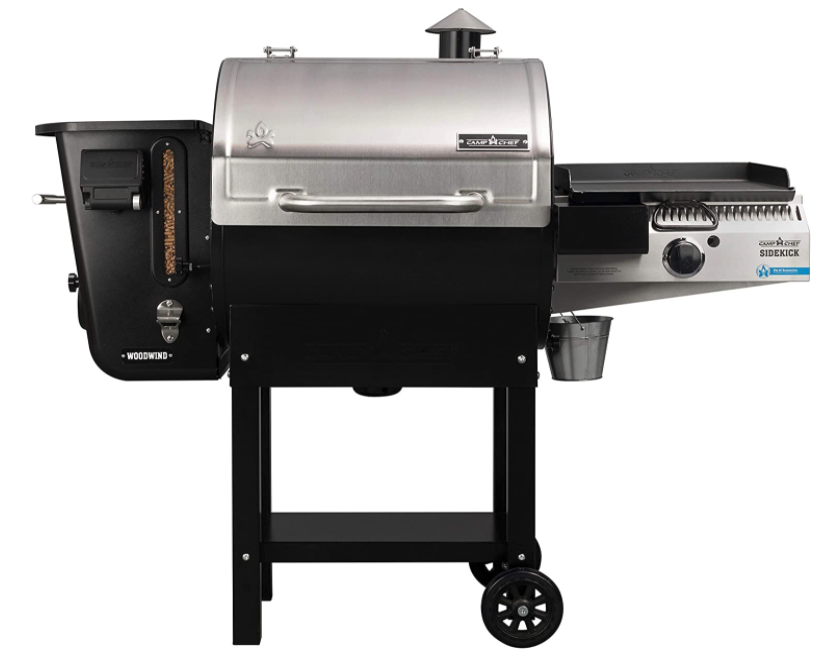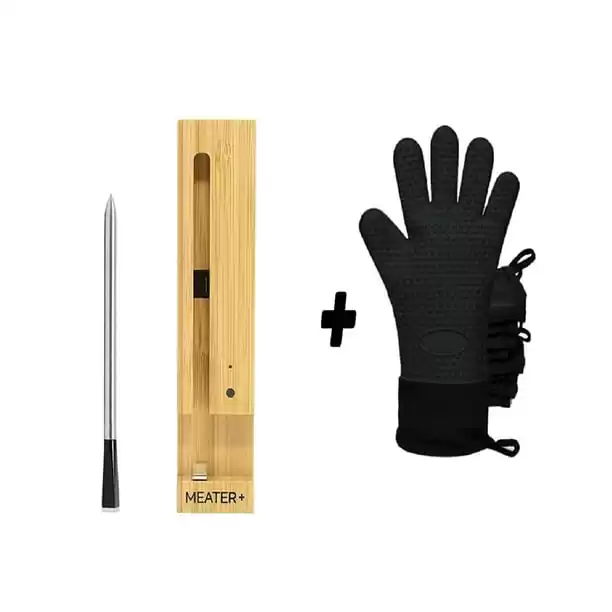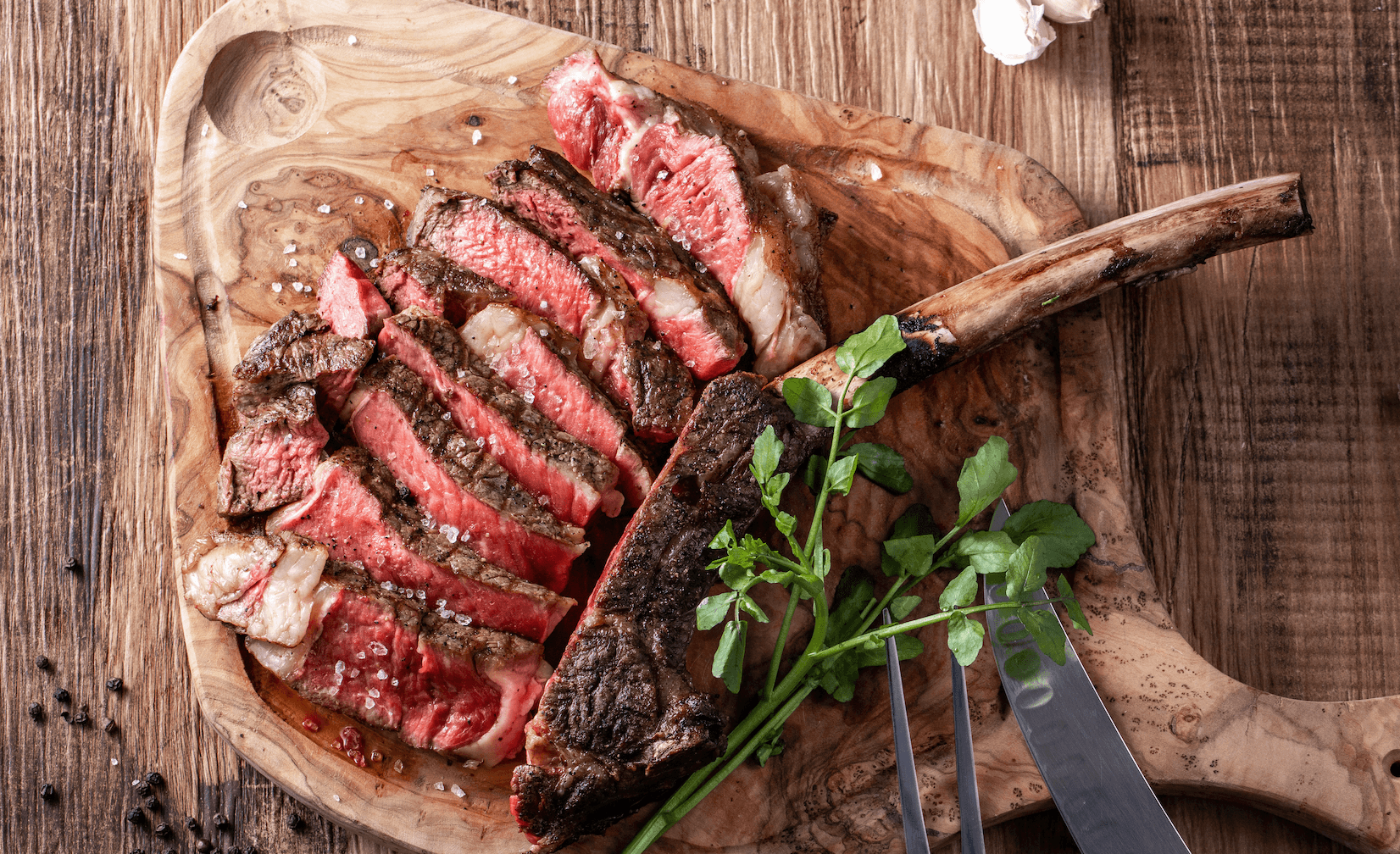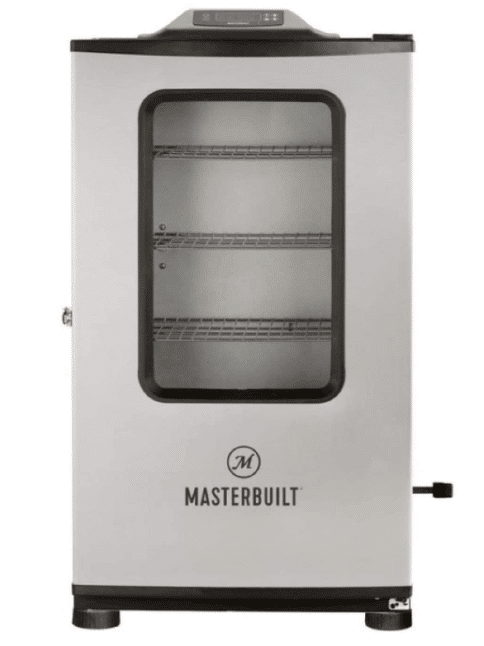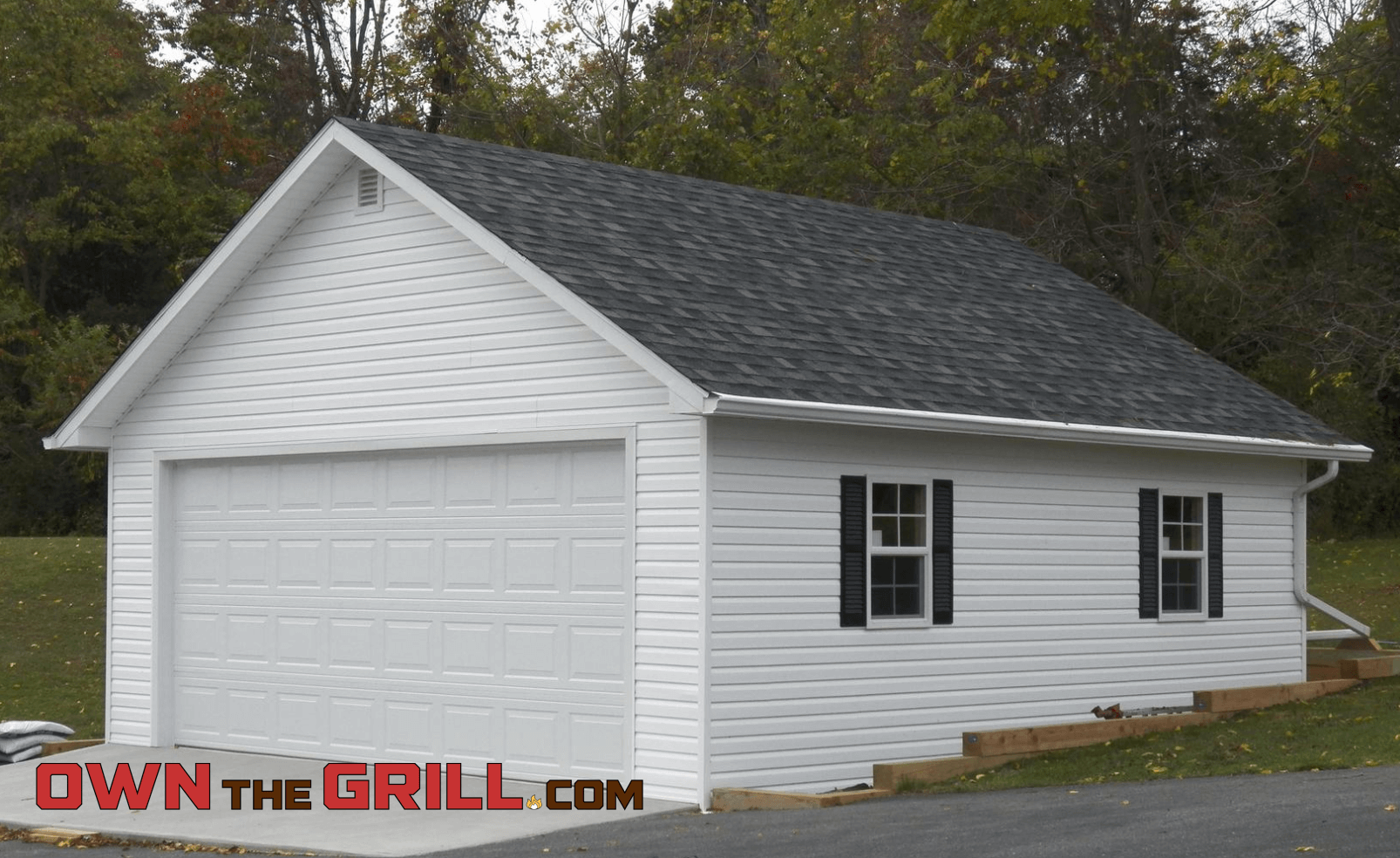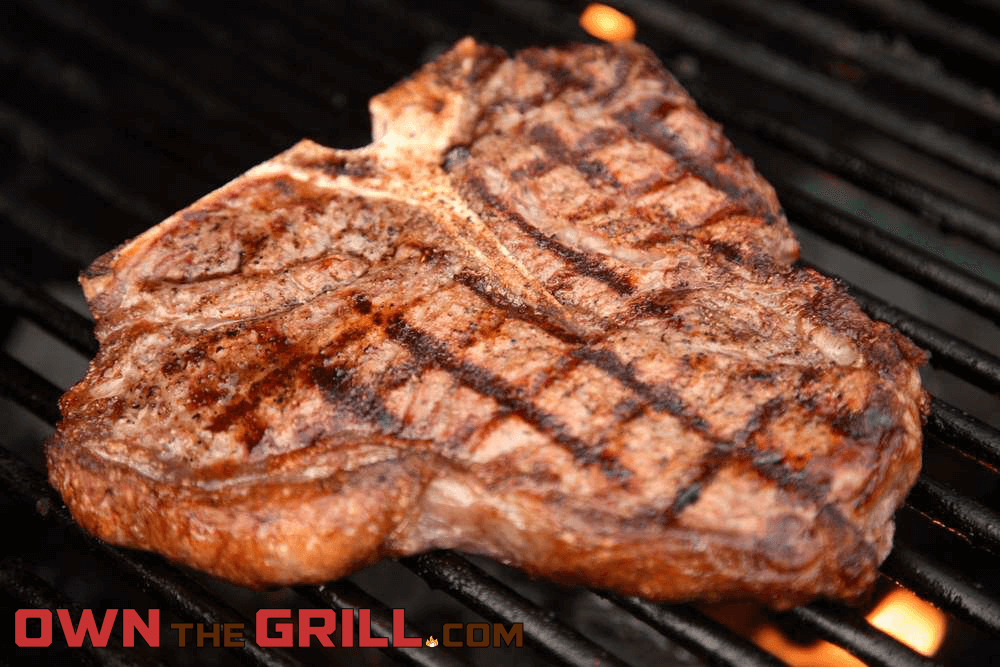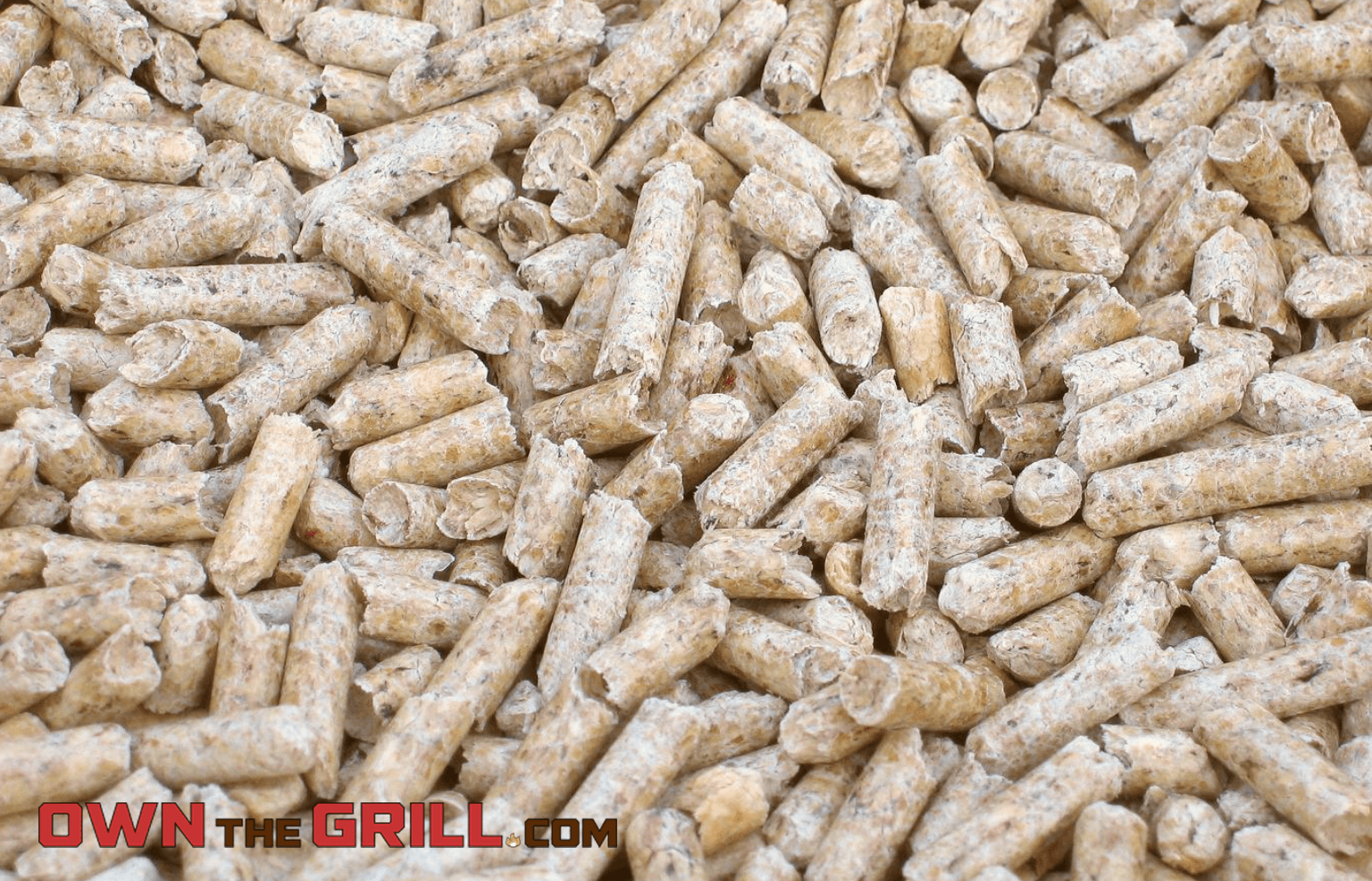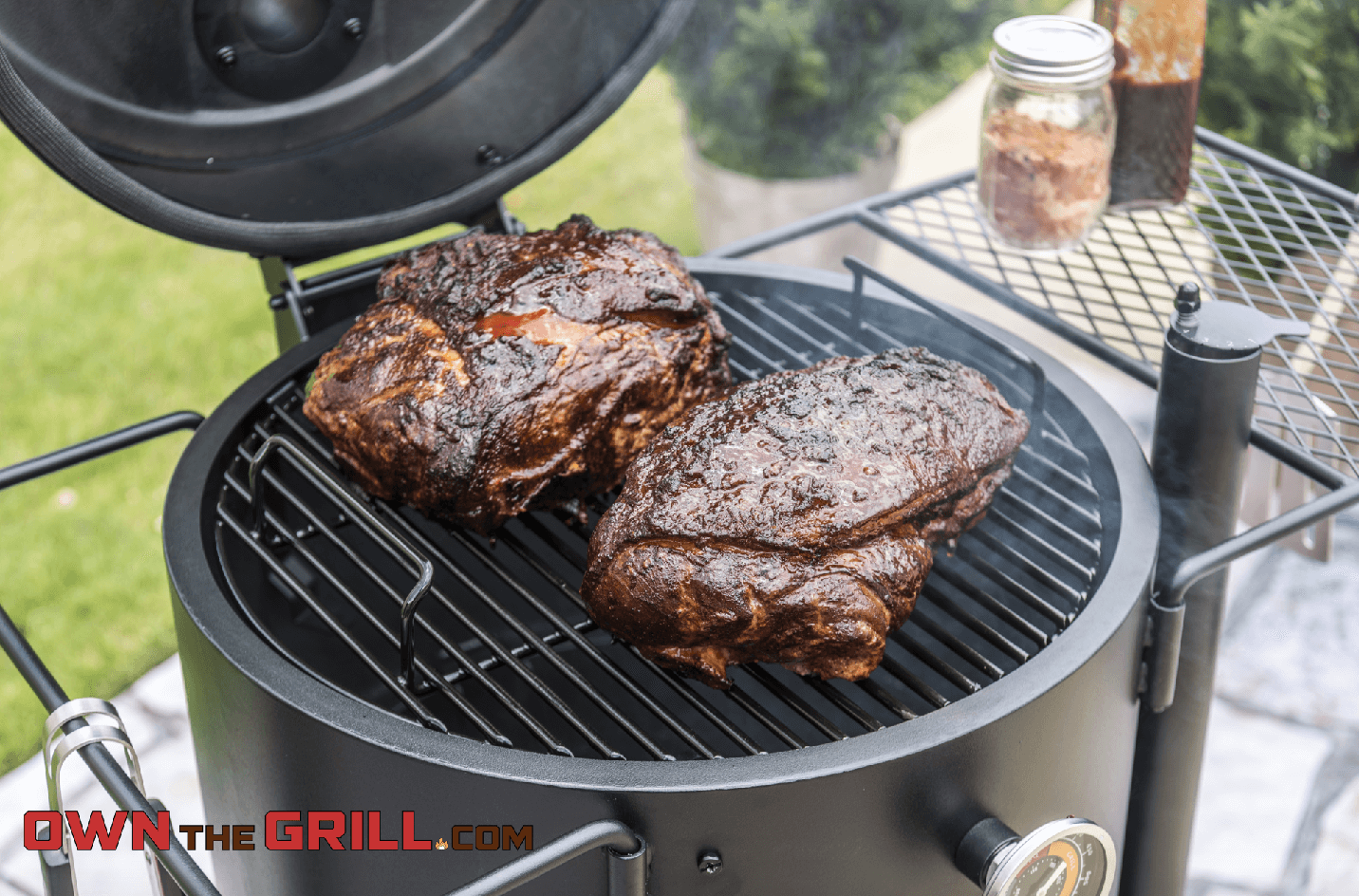This content contains affiliate links. If you make a purchase after clicking a link on this page, we might receive a commission at no cost to you.
Wood pellet grills seem to be all the rage these days. With barbecue bloggers and enthusiasts all singing their praises (including us!), and leading pellet grill brands are all preaching about the benefits of these slow cooking units, you could be forgiven for wondering what all the fuss is about.
After all, what is wrong with good old-fashioned wood and coals?
In actual fact, the beauty of the pellet grill is that it takes some of the good from traditional charcoal grilling and makes it easier and more reliable.
Wood pellet grills offer consistency and convenience, without losing any of the flavor or fun of traditional grilling. If you want to find out exactly how they work, then read on!
Understanding How a Pellet Grill Works
What Are Wood Pellets?
The most obvious difference between a wood pellet grill and any other type of backyard unit is the fuel source. Pellet grills are fuelled by wood pellets made from compressed sawdust.
The pellets are cylindrical in shape, and approximately pill-sized. They are made for culinary purposes and so are non toxic and contain high quality, natural wood. They should not be confused with industrial wood pellets intended for heating only.
What Are The Benefits Of Wood Pellets?
When compared to charcoal, wood chunks or chips, gas grills and electric grills, wood pellets offer a number of notable advantages.
Economic & Efficient
Firstly, because they are made of compressed wood pulp, pellets are densely packed and therefore highly efficient. They contain less moisture and more energy than wood chunks, and therefore burn for much longer.
A 40 pound bag of wood pellets will last you much longer than the equivalent weight in logs and sticks, and will cost you less than a bag of premium charcoal.
Clean Smoke
As pellets combust without the need for charcoal, they produce clean, blue smoke that is not dirty or bitter tasting. This smoke is ideal for slow cooking meat over a low heat for several hours, and results in deliciously tender and smoky results.
Consistency
As the pellets are all uniform in shape, size and density, and are funnelled into the firebox automatically, they are able to produce consistent temperatures and sustain them for extended periods of time.
This, in turn, benefits the texture and consistency of the meat.
Good Flavor
Depending on the type of wood used in the pellets, they have different aromas and flavors.
These flavors can be chosen specifically to compliment the meat or food that is being cooked, as the smoke will infuse into it and add another flavor dimension. Different types of wood can even be mixed in order to create a ‘blend’.
Less Mess
Charcoal fires create lots of dirty soot and ash that has to be cleaned up at the end of any party. While wood pellets create ash, it is cleaner and is contained within the firebox.
Most pellet grills have an ash dispenser system too, whereby the ash can be removed easily and emptied without the rest of the grill being affected.
Hands-Free Functionality
One of the key advantages of wood pellet grills is their ease of use. Rather than having to tend to a charcoal fire, stoke the flames and load up the logs, the pellets are fed continuously into the firebox by the auger, so you don’t have to lift a finger.
As long as the hopper has been sufficiently filled, you can even leave these grills to work their magic overnight, and they will not die out or waver in the slightest.
What Are The Parts Of A Pellet Grill?
So, now that you understand what the benefits of a pellet grill include, let’s take a tour of its component parts.
The Hopper
The hopper is the chamber into which the wood pellets are loaded. The capacity of the hopper will affect how many pellets can be loaded at any one time, and therefore the length of time that your grill will be self-sufficient for until it needs topping up.
The Auger
The auger is a screw-shaped mechanism which twists automatically in order to funnel the pellets from the hopper into the firebox. It needs to be good quality and reliable to prevent annoying blockages.
The Firepot
The firepot is where the pellets are heated by a hotrod until they combust and ignite. Once lit, the fire burns steadily and constantly in the pot, producing clean, blue smoke and heat, which are both channelled into the cooking chamber.
The Cooking Chamber
The cooking chamber is the main grill. It looks like a regular grill with racks and a domed lid or hood that is closed in order to keep the heat and smoke trapped.
The meat and food that is being grilled or smoked is placed directly on the racks, and left to slowly cook through.
The lid of the cooking chamber should seal closed, and usually has a thermometer on the outside which lets you know what temperature the chamber has hit.
The Water Pan
The water pan is not on most pellet smokers but it is a fixture on some. it usually sits in the base of the cooking chamber and is used as a heat regulator and a cooking aid. It can be filled with pure water, or seasoned water, and as the liquid heats up it turns to steam.
This steam helps to keep the meat moist and also adds flavor.
The Chimney & Dampers
The smoke and steam have to escape the chamber to prevent it from overheating, and they do this via the chimney. The chimney allows old smoke to leave so that new smoke can enter the chamber and the cycle can continue.
The dampers are vents located at the top and bottom of the unit. They allow you to control the temperature of the pellet grill.
The lower damper draws oxygen into the firebox, causing the flames to grow and intensify. The upper damper lets hot air out of the central chamber.
If you close your lower dampers, you can lower the temperature of your grill. If you close all your dampers, you will kill your fire. If you open your bottom damper, you will increase the temperature of your grill.
How Do You Use A Pellet Grill?
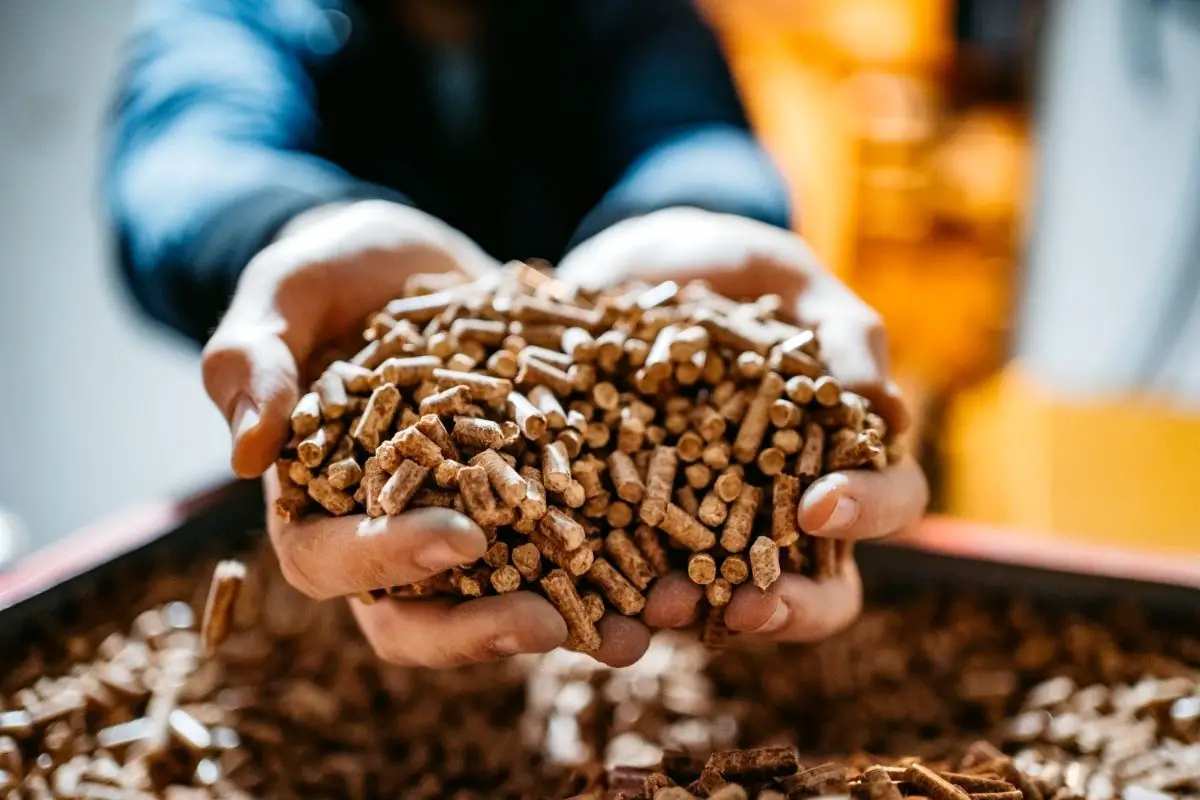
Having gone through all the component parts of a pellet grill, let’s look at how you use it in order to get the most out of it.
Step 1: Fill The Hopper
The first step when using any pellet grill is to fill the hopper with your chosen wood pellets. The bigger the hopper, the more pellets it will hold, allowing you longer to relax and hang out with your friends and family.
The hopper can be topped up during the cook without causing any disturbance to the cooking process, as it has its own, remote access door.
Step 2: Fill The Water Pan (Optional)
Before igniting any flames, it is important that your water pan is filled and in place, as this is a heat regulator and moisture source. The cooking chamber will become overly hot and dry without this crucial element.
Step 3: Get The Grill Started
To power up your wood pellet grill, it is simply a case of plugging in and switching on. Most pellet grills have a digital LCD display, like the Camp Chef Woodwind Series, however this is not an essential feature.
The power button will automatically turn the auger and begin feeding pellets into the firebox, where the hot rod will heat and ignite them.
- Sidekick supports pizza oven, griddle, & sear box attachments
- 811 sq. in. of cooking surface area to work with across two levels
- Intuitive LED control panel and WiFi capabilities
Step 4: Heat The Cooking Chamber
You need to allow your cooking chamber to reach its optimum temperature before you add your meat or food. To do this you must make sure that the lid is closed and sealed.
You can open the lower damper to fuel the flames with oxygen, and open the upper damper to encourage a healthy heat flow. This will quicken the preheating process.
You can keep an eye on the internal temperature of the chamber by looking at the lid thermometer. But be warned, these thermometers are notoriously hit and miss, so be sure to consult the LCD temperature reading as well, if your grill has one.
Step 5: Load The Meat (Food)
Once your cooking chamber has reached the desired temperature, you can add your meat. The meat should be placed directly on the rack, and directly above the water pan.
This way, the water pan will catch any juices and fluids that drip down and can recycle all that delicious flavor in the steam it creates.
For best results, you should keep your meat refrigerated up until the last moment. This is because cold meat absorbs smoke more efficiently than room temperature meat.
Note: You don’t have to only cook meat on your pellet grill! You can cook pizzas, or side dishes like veggies or mac and cheese easily on a pellet smoker.
Step 6: Be Patient
Once your meat is in the chamber, the only thing to do is wait. Pellet grills are designed to cook slowly, over a long period of time, and the slower the process, the more tender and juicy the result will be.
It is important not to frequently lift the lid of your pellet grill whilst your meat is cooking, as this will introduce cold air into the chamber and affect the consistency of the cooking temperature.
Smoked meat tastes best when the cooking temperature remains very steady throughout, so fluctuations are not desirable. Instead, trust your timings and use the lid thermometer as a guide.
Step 7: Probe The Meat
When your cooking time is almost complete, you can lift the lid and probe your meat in order to check its internal temperature.
The lid thermometer and LCD temperature reading, refer only to the internal temperature of the chamber itself, not of the meat.
The meat will take much longer to heat up on the inside than the outside, and this is why it is important to probe right to the center of the cut. Once the center has reached the desired temperature, you will know that your meat is cooked and good to eat.
With 165 feet of range and a dual sensor probe, it doesn't get much easier or more accurate than the Meater Plus.
How Do You Clean A Pellet Grill?
As we mentioned earlier, pellet grills are less messy than traditional charcoal grills, however they do still produce ash that needs to be cleaned up.
Many pellet grills have an ash disposal system that can be removed from the unit like a drawer and emptied directly into a bin. These are very handy and really speed up the cleaning process.
The also allow you to clean the ash periodically throughout long cooks, without disrupting the cooking process.
It is as important to clean the grill racks and chamber interior on a pellet grill as it is on any other kind of grill unit. We recommend scraping fat and juices off the racks at the end of each use, and vacuuming the excess away.
Then, every three uses or so, it is a good idea to give your pellet grill a more in-depth clean and wipe down the full interior as well. This prevents bacteria from developing, and extends the lifespan of your racks and surfaces.
What Wood Pellets Are Best For A Pellet Grill?
One of the keys to success when it comes to pellet grills is picking the right pellets for the job.
The most important thing is to make sure that you buy cooking/ smoking pellets as opposed to standard heating pellets.
Heating pellets are used to fuel boilers and heaters, and therefore contain sawdust and low quality wood pulp that is not suitable for consumption. Smoking pellets are more expensive than heating pellets, but do not be tempted to scrimp.
When it comes to smoking pellets, you have the choice between hardwood and softwood. Hardwoods are generally thought to be the better option as they burn more slowly and give off more smoke.
However, if you don’t like your meat to taste too intensely of smoke, softwood pellets will give a more subtle finish.
Red meats handle strong woody flavors like hickory and mesquite. Pork and white meats work well with sweeter fruit woods like apple, pecan and cherry. And alder wood goes with pretty much anything.
Final Thoughts
Pellet grills are easy to use, easy to maintain, and produce delicious results every time. The science behind them is innovative, and the inner workings of these units is beautifully simple.
Once you have given one a go, you certainly won’t look back!


